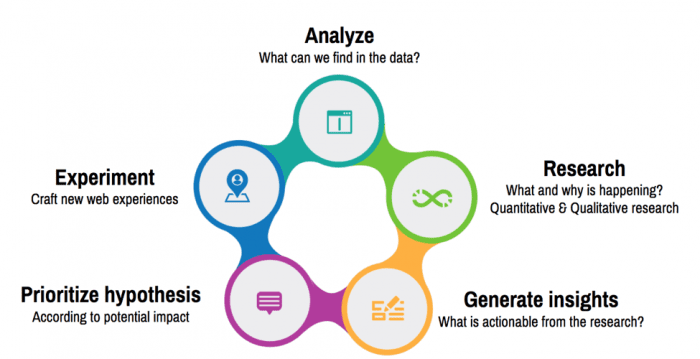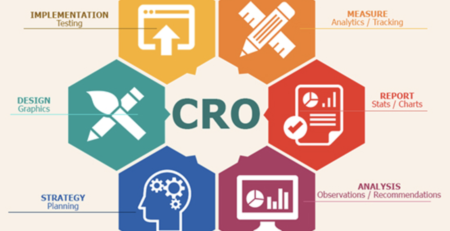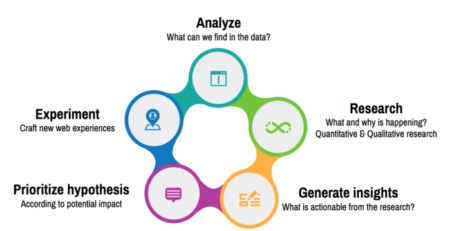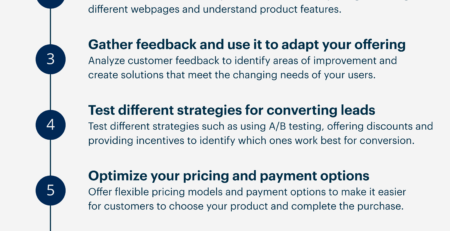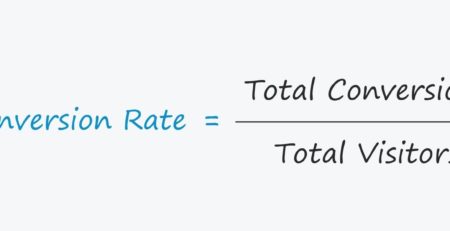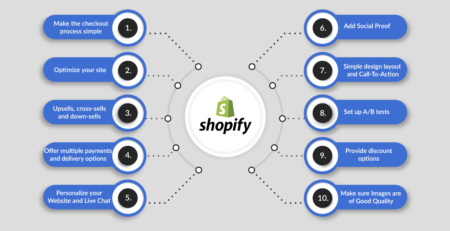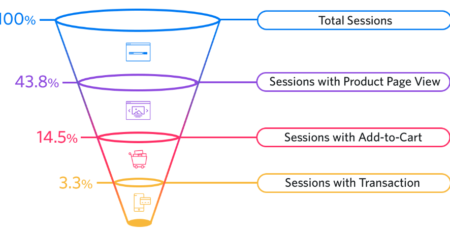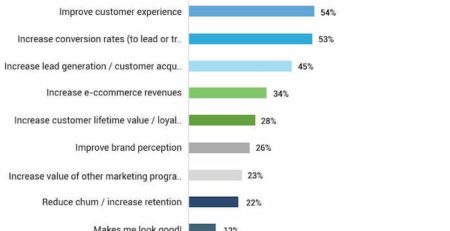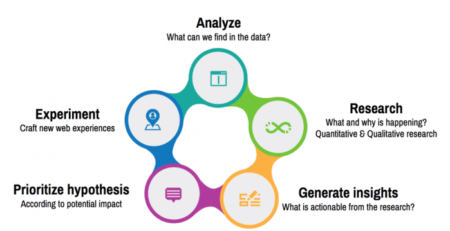How Does Conversion Rate Optimization Work?
Welcome, young reader! Have you ever wondered how websites turn visitors into customers? It’s all thanks to a powerful technique called Conversion Rate Optimization (CRO).
CRO is like a secret formula that helps businesses maximize their online success. With CRO, companies analyze data, make changes to their websites, and watch their conversion rates soar!
But how does Conversion Rate Optimization work, you ask? Well, let’s dive in and uncover the magic behind this fascinating process, step by step.
So, what are you waiting for? Let’s embark on this exciting journey to discover the ins and outs of Conversion Rate Optimization!
How Does Conversion Rate Optimization Work?
Conversion Rate Optimization (CRO) is an essential aspect of digital marketing that focuses on optimizing a website or landing page to increase the percentage of visitors who take a desired action, such as making a purchase, signing up for a newsletter, or filling out a contact form. By identifying areas of improvement and implementing strategic changes, businesses can maximize their chances of converting website visitors into customers. In this article, we will delve into the intricacies of Conversion Rate Optimization and explore how it works in detail.
The Importance of Conversion Rate Optimization
In a highly competitive online landscape, simply driving traffic to a website is not enough. What truly matters is converting that traffic into tangible results. This is where Conversion Rate Optimization comes into play. By optimizing various elements of a website, businesses can enhance their chances of turning visitors into customers. This not only boosts revenue and profitability but also allows businesses to make data-driven decisions and improve the overall user experience.
CRO helps businesses identify potential roadblocks or barriers that prevent visitors from taking the desired action. By analyzing user behavior, conducting A/B tests, and implementing changes based on data-driven insights, businesses can continuously improve their conversion rates and achieve their goals. Ultimately, investing in Conversion Rate Optimization is a crucial step towards maximizing the return on investment in digital marketing efforts.
The Process of Conversion Rate Optimization
Conversion Rate Optimization involves a systematic process that aims to improve the performance of a website or landing page. Here are the key steps involved in the CRO process:
1.
Understanding the Current Performance:
Before implementing any changes, it is crucial to have a clear understanding of the current conversion rates, user behavior patterns, and key performance indicators. This involves analyzing data from various analytics tools, reviewing heatmaps, conducting user surveys, and identifying areas of improvement.
2.
Setting Clear Goals:
To measure the success of any optimization efforts, it is important to establish clear goals and key metrics. These goals could vary depending on the nature of the business or the specific objectives of the website. For some, it might be increasing sales while for others, it could be generating more leads or increasing engagement.
3.
Analyzing User Behavior:
Understanding how users interact with a website is crucial for effective optimization. This step involves analyzing user behavior through tools like heatmaps, click tracking, and session recordings. By identifying patterns, drop-off points, and areas of confusion, businesses can make informed decisions regarding potential changes to improve the user experience.
4.
Generating Hypotheses:
Based on the insights gathered, businesses can generate hypotheses about the potential changes that could improve conversion rates. These hypotheses should be data-driven and informed by best practices in web design, user experience, and persuasive techniques. Each hypothesis should aim to address specific pain points, reduce friction, or enhance the overall user experience.
5.
Conducting A/B Testing:
A crucial aspect of Conversion Rate Optimization is conducting A/B tests to validate the effectiveness of potential changes. This involves creating two or more versions of a web page or a specific element and randomly presenting them to users. By comparing the performance of different variations, businesses can determine which version yields better results and implement the winning variation.
6.
Implementing and Iterating:
Once the best-performing variation has been identified, it is essential to implement the changes across the website or landing page. CRO is an iterative process, and ongoing monitoring and testing are necessary to continue improving conversion rates. Regularly analyzing data and making data-backed adjustments ensures that the optimization efforts are effective and aligned with the objectives.
By following these steps, businesses can continually refine their websites or landing pages, optimize the user experience, and increase their conversion rates over time.
The Benefits of Conversion Rate Optimization
1. Increased Conversions and Revenue:
The primary benefit of Conversion Rate Optimization is an increase in conversions and revenue. By making strategic changes to a website or landing page, businesses can improve their chances of converting visitors into customers. This directly impacts the bottom line and can result in significant revenue growth.
2. Better User Experience:
CRO focuses on improving the user experience by addressing pain points and reducing friction. By optimizing the design, layout, and navigation of a website, businesses can create a seamless and intuitive user experience. This leads to higher engagement, increased time spent on the website, and a higher likelihood of conversions.
3. Data-Driven Decision Making:
Conversion Rate Optimization relies heavily on data and analytics. By analyzing user behavior, conducting A/B tests, and monitoring key performance indicators, businesses can make well-informed decisions. This data-driven approach ensures that changes are rooted in evidence and increases the chances of success.
4. Competitive Advantage:
In a crowded marketplace, having a well-optimized website can give businesses a competitive edge. By continuously improving conversion rates, businesses can outperform their competitors and attract and retain more customers. This advantage can be particularly significant in industries with high customer acquisition costs or low margins.
5. Long-Term ROI:
Unlike other marketing tactics that require continuous investment, Conversion Rate Optimization offers long-term benefits. Once an optimized website or landing page is in place, the improvements can continue to yield results without additional expenditure. This long-term return on investment makes CRO a highly cost-effective strategy.
In conclusion, Conversion Rate Optimization is a critical process that can significantly impact the success of a website or landing page. By focusing on improving the conversion rates and user experience, businesses can achieve their goals, increase revenue, and gain a competitive advantage in the digital landscape. Making data-driven decisions, conducting A/B tests, and continually iterating are key aspects of a successful CRO strategy.
Key Takeaways
- Conversion Rate Optimization (CRO) aims to improve the percentage of website visitors who take desired actions.
- It involves analyzing user behavior, identifying areas for improvement, and making changes to increase conversions.
- CRO techniques often include optimizing landing pages, improving website design, and conducting A/B testing.
- By understanding what motivates visitors, businesses can make targeted changes to enhance the user experience and boost conversion rates.
- Regular monitoring and analysis of conversion data is crucial for ongoing optimization and improvement.
Frequently Asked Questions
Conversion rate optimization (CRO) is the process of improving the percentage of website visitors who take a desired action, such as making a purchase or submitting a form. It involves analyzing data, making changes to your website, and running experiments to increase conversions. Here are some frequently asked questions about how conversion rate optimization works:
1. Why is conversion rate optimization important for my website?
Conversion rate optimization is crucial because it helps you make the most out of your existing website traffic. By improving your conversion rates, you can increase sales, leads, and other desired actions without spending more on driving additional traffic. It allows you to maximize the return on investment (ROI) from your marketing efforts and ultimately grow your business.
Additionally, conversion rate optimization helps you understand your audience better. By analyzing data and running experiments, you can gain insights into what elements of your website resonate with your visitors and what may be causing them to leave or abandon their carts. This knowledge can inform your overall marketing and website strategy.
2. How do I get started with conversion rate optimization?
The first step in getting started with conversion rate optimization is to identify your key performance indicators (KPIs) and goals. What actions do you want your website visitors to take? Is it completing a purchase, filling out a contact form, or signing up for a newsletter? Once you have identified your goals, you can start analyzing data to understand your current conversion rates and identify areas for improvement.
Next, you’ll need to develop a hypothesis. What changes can you make to your website that you believe will positively impact your conversion rates? This could involve tweaking the design, copy, or layout of your pages. After that, you can start running experiments, such as A/B tests, to compare the performance of different variations of your website. Finally, analyze the results of your experiments and implement the changes that lead to improved conversion rates.
3. How long does conversion rate optimization take to show results?
The time it takes to see results from conversion rate optimization can vary depending on various factors, such as the amount of traffic your website receives, the number of experiments you run, and the significance of the changes you make. In some cases, you may start seeing improvements within a few weeks, while in others, it may take several months.
It’s important to note that conversion rate optimization is an ongoing process. It’s not a one-time fix but rather a continuous effort to improve your website’s performance. As you gather more data, run more experiments, and make iterative changes, you can expect to see long-term improvements in your conversion rates.
4. What tools can I use for conversion rate optimization?
There are several tools available to help you with conversion rate optimization. Some popular ones include Google Analytics, which provides valuable insights into user behavior on your website, and heatmapping tools like Hotjar or Crazy Egg, which show you where users are clicking and scrolling on your pages.
A/B testing tools such as Optimizely or VWO allow you to run experiments and compare different variations of your website. These tools often come with built-in statistical analysis to help you determine the statistical significance of your results. Additionally, user feedback tools like Qualaroo or SurveyMonkey can provide valuable insights into what your users think and want.
5. What are some common obstacles to conversion rate optimization?
One common obstacle to conversion rate optimization is a lack of data. To make informed decisions about your website and experiments, you need to have enough data to analyze. If your website receives very little traffic, it can be challenging to gather statistically significant results.
Another obstacle is a lack of understanding of your target audience. It’s essential to have a clear understanding of who your visitors are, what they’re looking for, and what might be preventing them from taking the desired actions. Conducting user research, using surveys or interviews, can help you gain insights into your audience’s motivations and pain points.
7 eCommerce Conversion Rate Optimization Fundamentals
Summary
Conversion rate optimization is a way to make websites better at getting people to do what you want them to do. It involves testing different elements on a website to see what works best and making changes accordingly. By analyzing user behavior and making improvements, businesses can increase their conversion rates and ultimately achieve greater success online. Remember, CRO is all about understanding what your visitors want and giving it to them in the simplest and most efficient way possible. So, if you have a website, give CRO a try and watch your conversions soar!

